"Here we have no cherubs, no heavenly gates, no dinners with Elvis and Jesus," explains the Egyptologist Hala Sayed , our guide. Wearing her impeccable blouse and white jeans that give her the air of a movie star, she says that the life after death what they imagined ancient egyptians It wasn't that far from life on Earth. On this September morning, we stand in the mostly empty main hall of the Cairo Museum, an impressive salmon-hued building on the tahrir square . It is very early and the buses full of visitors have not yet arrived.
The graves , as Hala explains, they used to be decorated with everyday reasons : people grinding grain or making beer, sexual scenes... They also showed loved ones that the deceased wished to see again, as their families or pets . This very prosaic version of Paradise was not due to a lack of imagination (let us not forget that these were people capable of imagining the goddess Ahti with the head of a wasp and the body of a hippopotamus), but because “they lived very well”, says Hala . “ Paradise was Egypt itself”.
But the present, at least for Joe, my twelve-year-old son, is much less heavenly. At nine in the morning the temperature is already around 32 degrees and we have barely slept. It is the beginning of the week that we are going to travel through Egypt, visiting Cairo and nile cruise , with stops at temples and tombs that border the river between the southern egypt cities, Aswan Y luxor . This is the trip of our dreams and today is a big day: the museum, the Pyramids of Giza and the Sphinx.
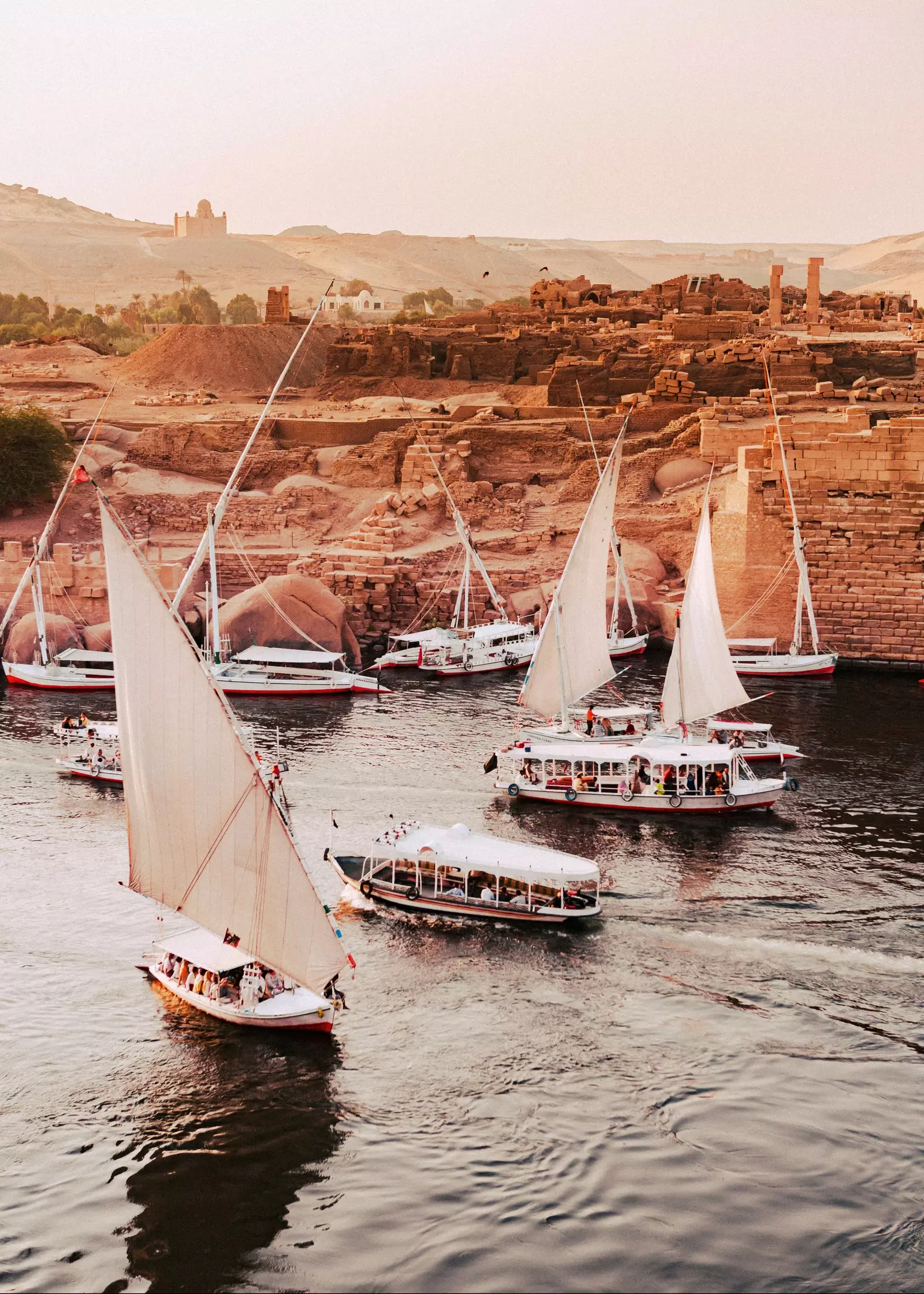
Passenger ship route between Aswan and Elephantine Island, a historical point of contact between Egypt and Sudan.
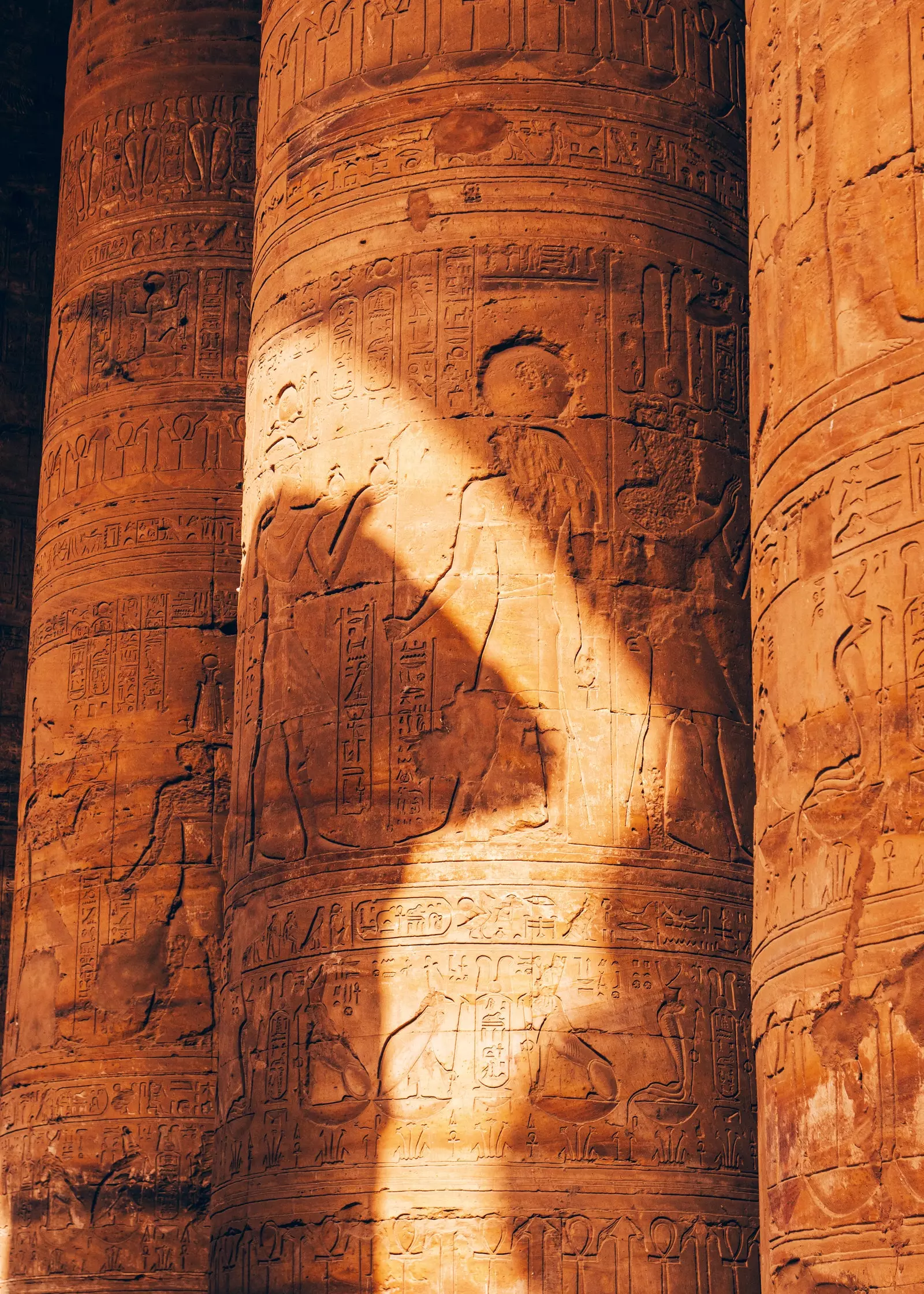
The Edfu Temple, which was completed in 57 B.C. C., during the reign of Cleopatra VII.
But, as Joe's color changes from his usual late-summer tan to a pale green, I assume he has little to do with it. the jet lag and the heat. While I am accepting that it is my turn to lose the day, as usually happens with mothers traveling with children, Hala takes the reins.
Call the tour coordinator and within minutes they have come up with a plan that everyone agrees with: they pick up Joe by car (he needs much more rest than to see Giza) and take him to the hotel, put me in touch with the doctor so that he can tell me how he is doing and I'm going with Hala to see the pyramids. It's for the best, but I still feel guilty because Joe is going to miss the day he was most looking forward to. I promise I'll bring you back here.
Hala and I crossed the busy midday traffic chatting about all sorts of topics: our children, the politics behind the Arab Spring and the brief presidency of the Muslim Brotherhood in Egypt. It is Cairo of all life, and he works since 1990 at Abercrombie & Kent , a business that he runs more than forty years organizing trips to Egypt . Like most of the guides that work with the company in this country, many of whom are university professors or former diplomats , he has a master's degree in Islamic art and architecture and is doing his doctorate.
He shows me the new neighborhoods that are emerging between Cairo and Giza , which have merged, forming a single megalopolis with a total population that touches 21 million . She also talks to me about new administrative capital who is building the President Sisi about 50 kilometers from Cairo and which will be, when completed, the largest planned city in the world . This is one of the things I missed the most about traveling: the relaxed but profound conversations that occur in moments of transit.
The Great Pyramid of Giza is the only survivor of the Seven Wonders of Ancient Times.
In Cairo , past and present intertwine in ways you don't see anywhere else in the world, and as we talked, we've gotten closer to the pyramids that loom over most of its urban landscape. With the number of times I've seen photos of the Great Pyramid of Giza , the oldest of three and sole survivor of the seven wonders of ancient times , I thought I had an idea of what it would be like live.
I was wrong. Its size, texture and the way the light falls on it when the sun reflects off the desert, filtered by intermittent clouds, is something to feel in person . Hala has scheduled the visit for the afternoon, at a time when the heat is a little less oppressive and the crowds have begun to disperse. There are people walking around, but it seems like today is a pretty quiet day. Even before covid, tourism figures had not returned to normal after the 2011 revolution.
The government hopes to increase them again with large projects such as the Grand Egyptian Museum , whose opening date has been postponed for almost a decade. Its enormous silhouette of glass and concrete can be seen in the distance, a state-of-the-art facility which has cost a billion dollars and to which The 5,600 objects extracted from the tomb of Tutankhamun will be moved , among other valuable elements. There are enough pieces to fill both the known cairo museum like the new one, which, when it finally opens its doors at the end of 2022, it will be the largest archaeological museum in the world.
There are even fewer people inside. I pass only one person as I climb the steep, low-ceilinged tunnel that leads to the burial chamber , which is found in the center of the great pyramid . The security guard tells me that if I stand in the middle of the room and close my eyes for a couple of minutes, I will feel a strange energy. He leaves me alone to try, and I do feel something, like a kind of stillness, balance.
It may be because I know that I am under more than two million granite blocks, each of which exceeds two tons in weight. Or maybe it's because I'm alone in the exact place where Pharaoh Khufu's body lay about 4500 years ago.
Aswan is a key contact point between Egypt and the rest of Africa, known for the spice trade.
Egypt , at least as we know it, would not have come into existence without the Nile . This can be sensed in the hour and a half flight from Cairo a Aswan , to some 800 kilometers to the south r. The Sahara desert covers the 94 percent of the country , and most of the population lives a few kilometers from the river.
From above, the strips of fertile land flanking its shores form an emerald green serpent slithering across a parched land. Almost all the daily aspects of life in Egypt or they came dictated by the floods of the Nile . Even the 70 days that it took embalm a body they were due to this: the Nile is flooded when the star Sirius reappears in the sky after an absence of 70 days; the rebirth of the earth also represented the rebirth of the dead.
Pharaoh's taxes also depended on this: most temples had a nilometer , a deep well-like structure designed to measure the water level; the higher it was, the more citizens were charged. Touring this country by boat seems the most appropriate, a trip through the waters that sustained ancient egypt and they still do to this day.
The city of Aswan It is, for thousands of years, the point of contact between Egypt and the rest of Africa , as well as an important center of commerce. In addition to the enormous prey which was completed in 1970, part of its fame comes from the exchange of two very precious goods: the spices and the camels.
"Camels are the most loyal domesticated animals, and also the most unruly," explains Mohamed Ezzat, the witty Egyptologist with a great sense of humor who will be accompanying us for the next few days. We are taking advantage of the free hour before returning to the ship to walk around the aswan spice market.
With his mischievous smile, he tells us that his uncle's camel stopped eating and drinking for two weeks to accompany his owner, that he was sick and in bed. Mohamed swears that a few days later he saw this same drug dealer smoking a hashish cigarette with his nose.
We stop at the spice shop Mohamed's favorite to have a cup of an intense Mint tea with the owner, who waits patiently while we sniff everything, and we leave with little bags of cumin bright orange-yellow, cardamom heady scent and dukkah , a mixture of spices that is spectacular mixed with humus.
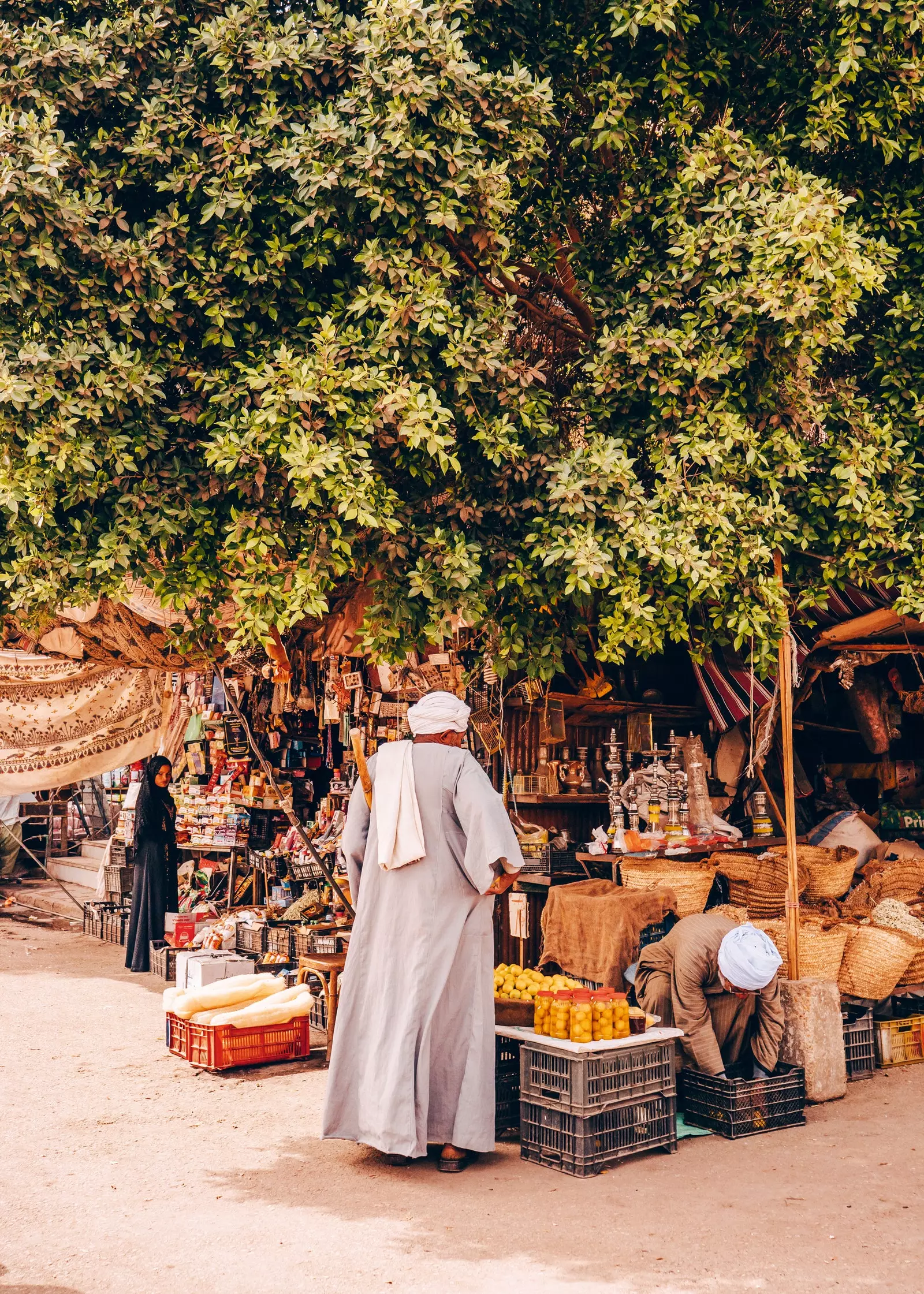
An Edfu city market stall with a large assortment of spices for sale.
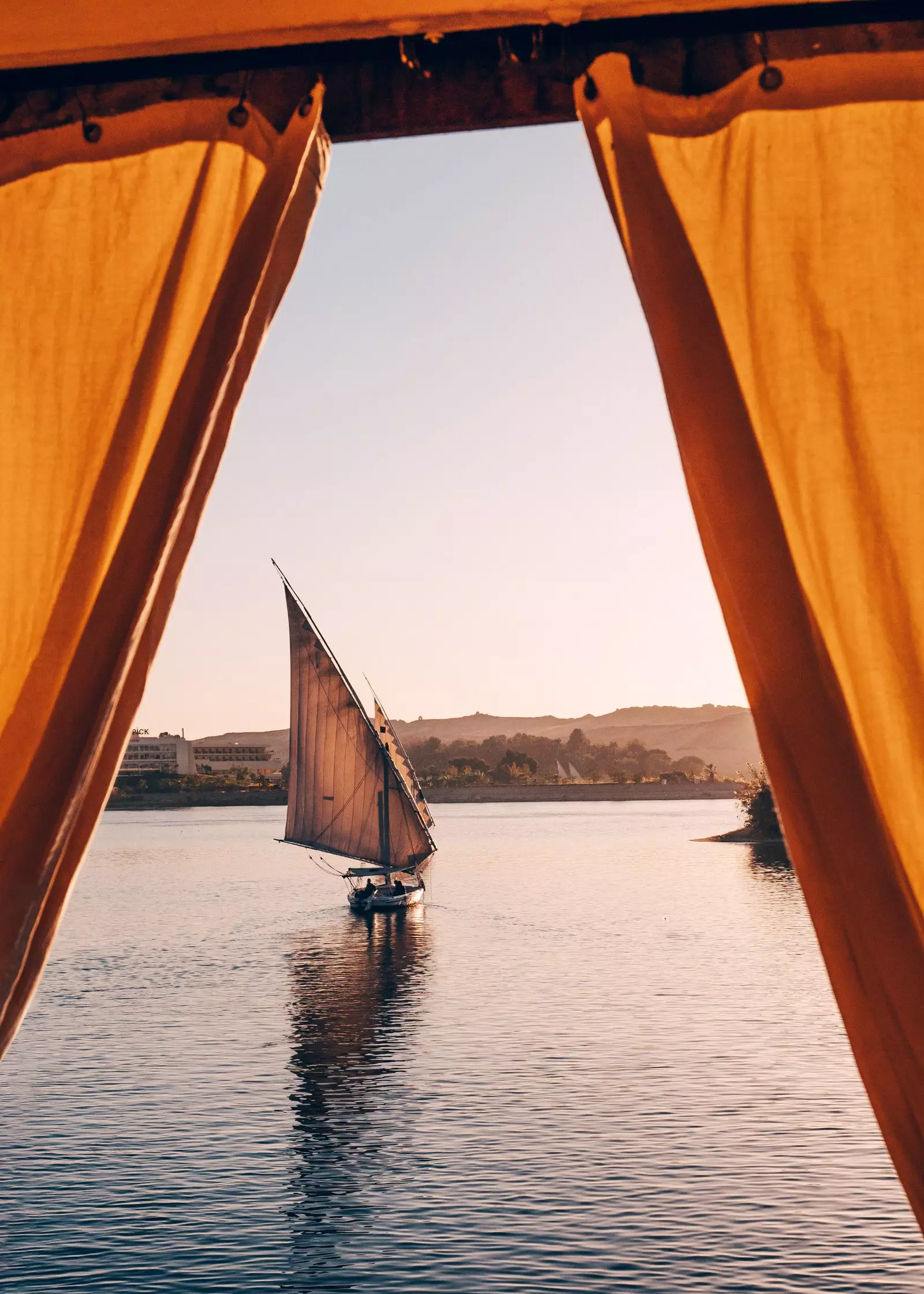
A felucho, a traditional wooden boat, receives the wind in its sails.
The cruise is Sanctuary Sun Boat IV , a spacious 40-cabin Art Deco-style vessel with plenty of room to lie down and watch life go by on the Nile . The river trip has a certain routine. We almost always start with a excursion to a temple , we return to eat on the boat, we go out to see another temple, we return to dinner and start the march to the next stop.
The first afternoon, still in Aswan , we ride on felucca , a traditional wooden sailboat . While the captain goes from one side to the other, barefoot, managing the two sails to turn hard and catch the wind, Mohamed points out the important places, such as the exuberant Aswan Botanical Garden , on the kitchener island , and the 1899 Old Cataract Hotel (now managed by Sofitel), where the film adaptation of the Agatha Christie novel , Death on the Nile, 1937.
It is also here where all the celebrities visiting Aswan , from the British archaeologist Howard Carter until Princess Diana . My favorite moment is the late afternoon, when we get back on the ship and share impressions as we recharge with cold drinks and endless bowls of salted peanuts. Joe and I walk the river with our eyes from bank to bank, watching the children jumping into the water from the docks and they greet us as we pass . The purr of the boat engines accompanies the fishermen coming home . One afternoon, as the sun sets, lighting the landscape in golden tones, we see three boys leading a dozen horses to swim in the river.
All the temples that we visit along the trip are impressive: the Kom Ombo , to some 48 kilometers from Aswan , has some painted ceilings that are still intact, and karnak , near luxor , is found the temple complex whose enclosure dedicated to Amun-Ra is he largest religious building in history . But Temple of Isis at Philé is perhaps the most moving. It is the place where a inscription dated from the year 394 d. c. , and it is estimated that this is the last sample of the hieroglyphics of Ancient Egypt.
This loose line on the god Mandulis is the last known vestige of a writing system whole and the way of life that accompanied it, which came to an end here after three millennia. Mohamed points out the sites where the Christians who took over the temple in the 5th century disfigured the faces of Egyptian deities. He shows us some small crosses that supposedly engraved the order of maltese during the crusades , the graffiti left by the Napoleon's troops in 1799 and a tribute , engraved on the top of one of the outer walls, with the names of several fallen British soldiers in Sudan in 1884.
The entire complex is an impressive example of modern engineering: in the late 1960s, due to the risk of the temple being submerged by floods caused by the newly built aswan dam, the Egyptian Government and UNESCO moved all the buildings , stone by stone, to the nearest agilkia island , where it remains today. The temple has witnessed the events of the last 2,000 years, and the layers of history that have been layered on it are as impressive as the structure itself.
The Egyptologist Mohammed Abdelrehim tells me what life was like luxor in the 1970s: "We found bones and sold resin bead necklaces to tourists." Mohammed, who grew up in a neighborhood near the Valley of the Kings, is a lifelong friend of Mohamed, our previous guide.
“Here it's like being called Paco”, he jokes before telling us that we can call him Mohammed Bueno. He is going to take us on a private tour of the ancient necropolis in which is buried New Kingdom royalty , in deep tombs carved into the surrounding barren hills. The New Kingdom of Egypt is the name given to the period between 1550 and 1070 a. c. and what was a golden age of egyptian art , with great political stability. Mohammed is known luxor from up to down.
With his intellectual beard and explorer's hat, he looks like a typical studious, dependable character from an Indiana Jones-type movie. When we pass the half-demolished houses around the archaeological zone, he tells us that the government has bought several of them in order to continue with the excavations, since there are graves that have not yet been discovered . Mohammed says that, when he was little, it was usual that, if a rug was lifted in any house, a tunnel dug by the family to look for treasures.
The last hieroglyphic inscription of Ancient Egypt is found in the temple of Isis at Philé.
We wait at the entrance of the tomb of Amenhotep II while the guards open the door. Mohammed has scheduled an opening of the tomb which, he tells us, has passed 20 years closed and that now can only be seen in private visits to prevent deterioration. Joe and I may be the first people to come see her in a year.
We continue to marvel at how lucky we are to be able to enter this place, and also take it easy and observe carefully. Guides are not allowed to enter the tombs , so Mohammed explains to us in advance what we have to look for. And luckily, because otherwise I would have spent the whole time hypnotized with him. tomb roof, painted like a night sky , with a deep dark blue speckled with yellow stars.
Then we enter the tomb of King Tutankhamun alone, and the guard tells us to approach see the mummy up close . We look in the face king tutankhamun , a few centimeters away and through a sheet of glass.
the tomb of the queen nefertari has some wall paintings precious. Thanks to Mohammed's indications, we find the queen herself in one of the reliefs, with a eye of horus tattoo (Apparently, it is the first tattoo represented in a work of art). We also see the red lines with which a master painter corrected the strokes of the most novice craftsmen.
when returning to Cairo , Hala takes us to the newly discovered wahtie's tomb on the Saqqara necropolis , about 24 kilometers southeast of the pyramids of Giza . We laughed, perhaps a little unfairly, at the expense of poor Wahtye, who lived 4,100 years ago and, as Hala tells us with a smirk, really wanted everyone to know how important he was. The tomb is full of huge images of him that seem to want to highlight the greatness of a person who, although he was priest of a king, he wasn't royalty.
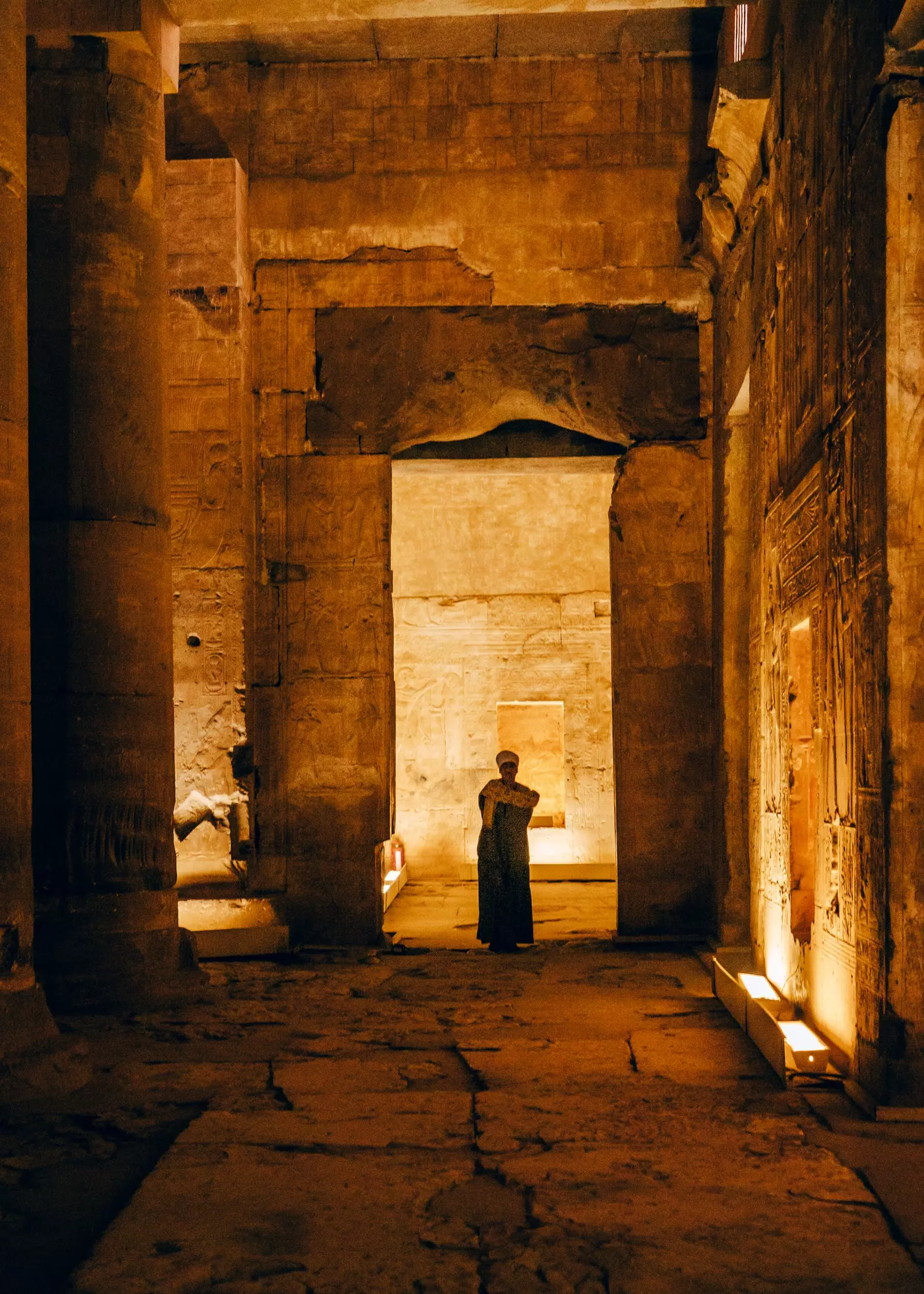
The temple of King Seti I, also known as the Great Temple of Abydos, built around 1279 BC. C. in the Valley of the Kings.
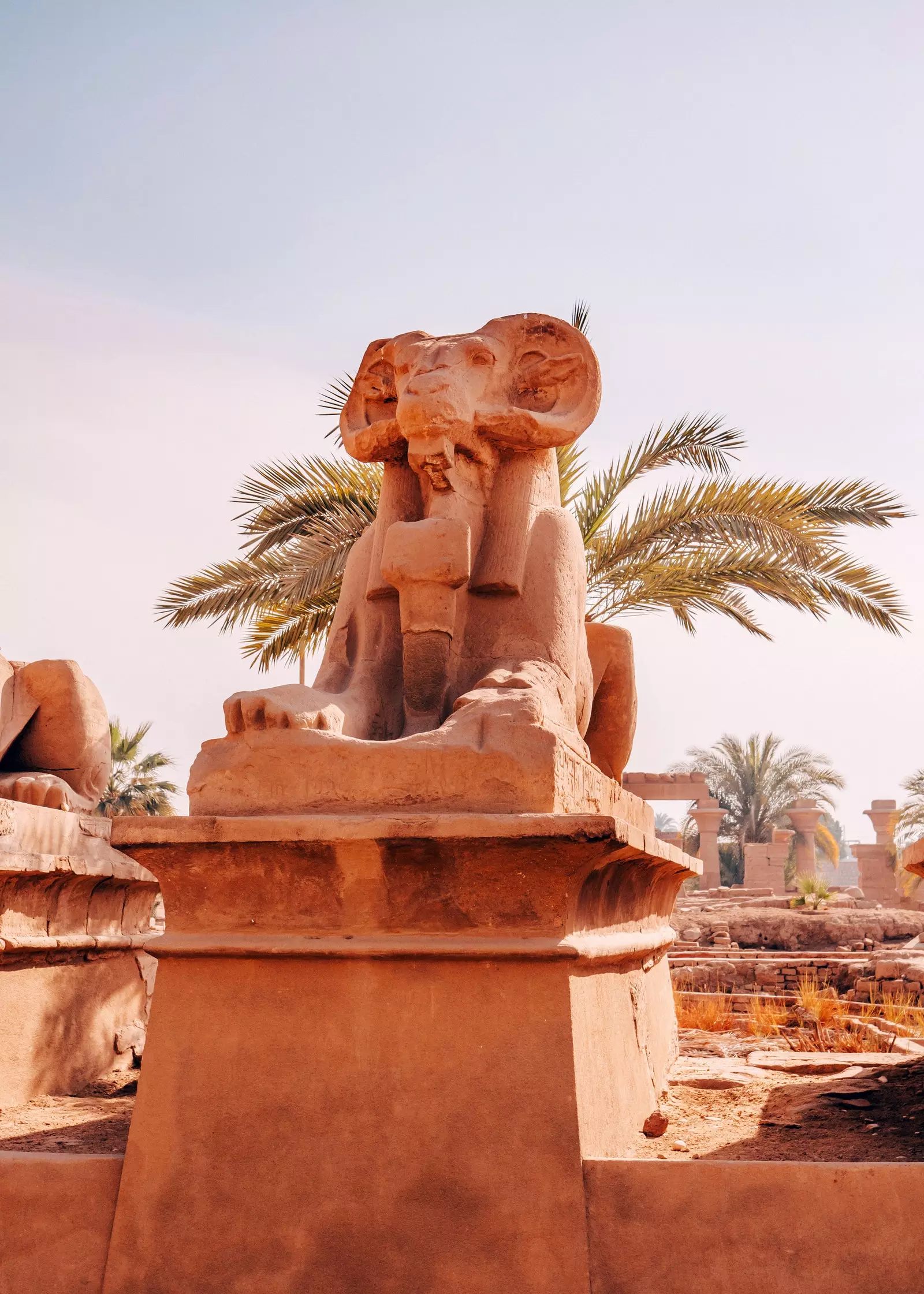
The Karnak temple complex in Luxor, in whose creation numerous Egyptian pharaohs participated over some 2,000 years.
Later, as we drive to the islamic district of cairo to see the Mosque-Madrasa of Sultan Hassan , of XIV century Hala says something in Arabic to the driver. We stop half an hour later, and Hala asks Joe to come with her.
We are in a secondary entrance, much less used, to the Sphinx and the Pyramids of Giza . Joe doesn't have time to explore them as thoroughly as I did, but he gets the experience anyway. I am delighted to have been able to keep my promise to return to him, and that "someday" was only a week later.
I notice that takes photos with the pyramids in the background and send one to his friends. Then upload it to Instagram , his moment to surrender to that timeless human need, the same one felt by Wahtye, and the Christians of old, and Napoleon's troops: launch the message to the world " I exist. i've been here too”.
Best moments
Day 1: the size of the Pyramids of Giza , the amazing ingenuity of its structure, fascinated me. If you are not claustrophobic, it is worth going into the great pyramid to the burial chamber which is located in the exact center of this structure of 4500 years.Day 2: The felucca ride through the Nile at sunset next to the beautiful Botanical Garden and the stately hotel was the perfect end to a day full of emotions.
Day 3: I am still struck by the idea that, in the late 1960s, all the buildings in the Temple of Isis at Philé to its current location to avoid possible flood damage.
Day 5: I cannot explain how unique the experience of the private visit to the tomb of Amenhotep II in the King's Valley , that walk without a single other person in sight between its beautifully painted walls.
trip planning
Rami Girgis, who has been with Abercrombie & Kent since 2005 and has appeared on Condé Nast Traveler's Top Travel Specialists list several years in a row, designed this trip to Egypt with two important details : a one week duration , and the presence of a 12-year-old boy.
His knowledge of Egypt are extensive: he grew up and studied in Cairo and he spent several years working as an Egyptologist before moving to USA . He has done countless tours of egypt , and he returns at least once a year to approve new destinations and meet with guides. Thanks to this, he managed to design a complete itinerary, based on one of the A&K Classic Nile Cruises , but that left a little room for improvisation.
Rami managed the special visits to the two tombs and, with the intention of showing interesting details about the ancient egypt daily life exchanged a visit to a temple for a stop in Deir el-Medina , versus luxor , the ruins of a village where the artisans who worked on the royal tombs lived. The trip itself also proved flexible, from the possibility of stopping at an essential oil shop in Aswan to a visit to a school to discover what education is like in the area.
The deep and lasting bonds that both Rami and the local guides have with the local people gives them amazing agility, and they manage to create personalized trips that get away from the package tour feeling . A ten-day trip, three of them in Cairo, with a four-night river cruise between Aswan and Luxor, can cost around eight thousand euros and includes accommodation, full board, guided tours (also with tickets to venues and parks) and transportation to and from the airport.
